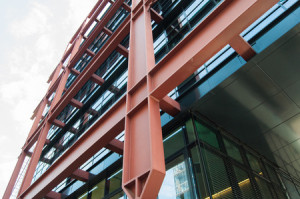 Structural engineering is responsible for everything from bridges and skyscrapers to roads and hospitals, but it also has the power to save lives and prevent serious damage. With recent natural disasters like hurricanes Harvey and Irma and the 7.1 magnitude earthquake that struck Mexico City in mid-September, it’s important to reflect on what steps city planners and governments can take in order to minimize these tragedies. With the assistance of new technologies, structural engineering is making communities and the individuals that live within them safer. To learn more about how high-quality structural engineering can impact our cities for the better, keep reading.
Structural engineering is responsible for everything from bridges and skyscrapers to roads and hospitals, but it also has the power to save lives and prevent serious damage. With recent natural disasters like hurricanes Harvey and Irma and the 7.1 magnitude earthquake that struck Mexico City in mid-September, it’s important to reflect on what steps city planners and governments can take in order to minimize these tragedies. With the assistance of new technologies, structural engineering is making communities and the individuals that live within them safer. To learn more about how high-quality structural engineering can impact our cities for the better, keep reading.
Structural engineering in preparation for earthquakes
On average, 12,000 – 14,000 earthquakes happen every year. Most are relatively small, but about once each month an earthquake of magnitude seven or more strike somewhere across the globe. When bigger earthquakes occur, the potential for serious damage increases significantly. In fact, a report from NOAA found that on average, economic damage of these large-scale earthquakes was some “$2.1 billion, while median damages were much less, at $529 million.”
In an effort to combat the damaging effects of these natural disasters, engineers focus their time and energy on finding ways to help buildings withstand extensive sideways movement. The more motion a building can handle, the more likely people working and living inside will be able to escape. This isn’t always the case, as even the most well-engineered buildings can collapse during a powerful earthquake, but there are structural engineering techniques that do make a difference. These techniques include:
- Avoiding building materials like brick, mortar, and concrete blocks
- “Base Isolation” a building technique that sets a structure’s foundation on ball-bearings or springs to absorb shock from the movement caused by tectonic plates
- “Tuned mass dampers” which are devices that can prevent a building from shaking by some 30 – 40%
- Improving building codes and regulations
- “Shake Tables” or Simulating earthquakes in a laboratory using scale models
While there is still room for improvement, these building strategies have helped save thousands of lives. As more durable and flexible building materials hit the market, buildings will become even more resistant and the damage caused by earthquakes will decline.
Structural engineering in preparation for hurricanes
During the last 30-years, six of the 10 most costly natural disasters have been hurricanes. Puerto Rico is still recovering from the aftermath of Hurricane Maria, and Houston, Texas and parts of Florida will be rebuilding for months and even years. These large metropolitan cities depend on the ocean, but it’s important that structural engineering plays a significant role in the rebuilding process. Steps are already being taken to prevent tragedy including:
- Passing stronger building legislation. A law in Florida requires all buildings to “withstand winds of 111 MPH.”
- Improving storm shutter technology
- Reengineering sewer systems
- Elevating homes, highways, and buildings
- Installing storm pumps throughout major metropolitan areas
- Building seawalls
As sea levels rise and storms become stronger, additional steps may need to be taken. Some engineers even predict a future where entire cities are elevated or moved further inland. Hurricanes and Tropical storms undoubtedly present challenges, but encouraging progress is being made.
Make sure your building is prepared for the unexpected
Are you preparing to start work on a new project? Do you currently own a historic building that could potentially crumble or collapse in the event of a natural disaster? If so, it’s important that you take steps to protect the integrity of the structure and those who utilize it. The team here at McNeil Engineering has a wealth of experience in this area and know exactly what it takes to improve both safety and strength of your building. Together, we can take steps to safeguard your property and livelihood. We invite you to visit our website in order to learn more. http://mcneilengineering.com








